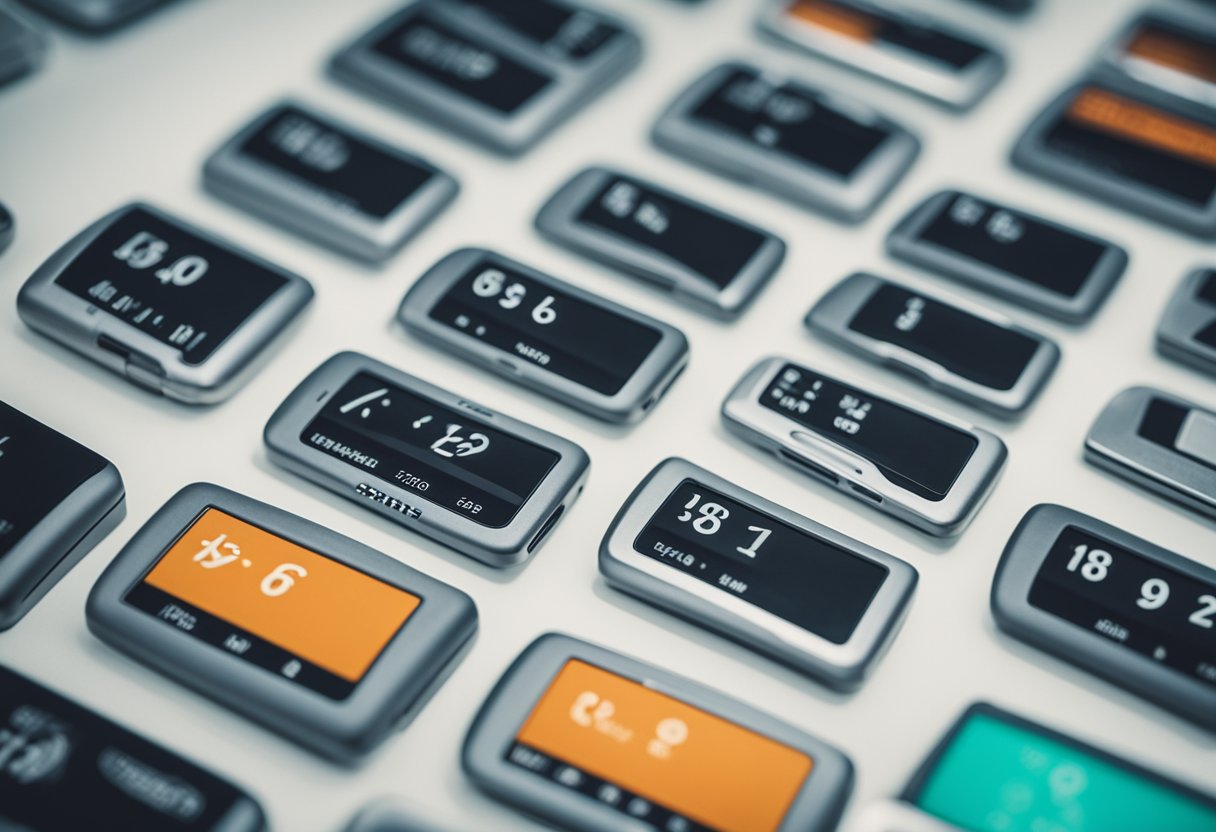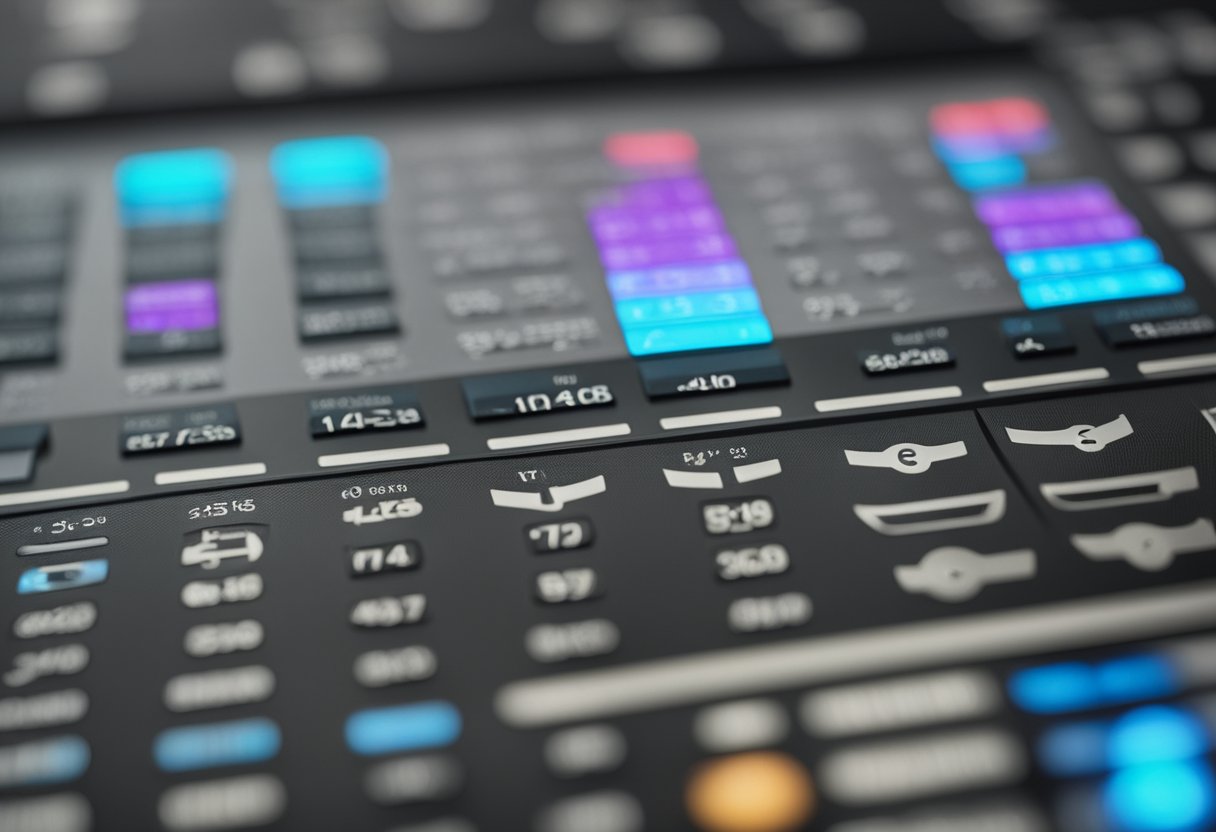A spine calculator is a tool used in the printing industry to calculate the width of a book’s spine. It is an essential tool for publishers, authors, and book designers who want to ensure that their books are printed with the correct spine width. The spine width is determined by the number of pages in the book, the paper type and weight, and the binding style.

Using a spine calculator is simple and straightforward. All you need to do is enter the number of pages in your book, the paper type and weight, and the binding style you want to use. The calculator will then provide you with an estimate of the book’s spine width. This estimate is based on industry-standard formulas and takes into account the thickness of the paper, the number of pages, and the binding style. By using a spine calculator, you can ensure that your book is printed with the correct spine width, which is essential for both the book’s aesthetics and its functionality.
Understanding Spine Calculators
Spine calculators are essential tools for authors, publishers, and printers. They help determine the width of the spine based on the number of pages, paper weight, and cover finish. This information is crucial for creating a polished and professional-looking publication.
Spine calculators are easy to use and require only a few inputs. The user enters the number of pages, paper weight, and cover finish, and the calculator provides the spine width. Some calculators also include additional inputs, such as bleed, gutter, and margin size.
The formula used by spine calculators is based on the thickness of the paper, which is measured in grams per square meter (gsm) or pounds per square inch (lb). The paper thickness factor is derived from the paper thickness, which is then converted into millimeters by dividing it by 1000 (for gsm) or by 2.205 (for lb). The cover width is typically provided by the printer or publisher and is added to the spine width to determine the overall width of the book.
Spine calculators are available as standalone software, online tools, or as part of a desktop publishing program. Some online tools, such as the Book Spine Calculator, are free to use, while others require a subscription or purchase.
Overall, spine calculators are an essential tool for anyone involved in the book publishing process. They provide accurate and reliable information about the spine width, which is crucial for creating a professional-looking publication. By using a spine calculator, authors, publishers, and printers can ensure that their books have a polished and professional appearance.
Types of Spine Calculators

There are various types of spine calculators available in the market. They can be broadly classified into three categories: manual spine calculators, digital spine calculators, and mobile app spine calculators.
Manual Spine Calculators
Manual spine calculators are physical devices that are used to calculate the spine width of a book. They are typically made of plastic or metal and are designed to be durable and long-lasting. Manual spine calculators are easy to use and do not require any special skills or training. They are ideal for small publishers or independent authors who do not have access to digital or mobile app spine calculators.
Digital Spine Calculators
Digital spine calculators are software programs that are designed to calculate the spine width of a book. They are typically available as web-based applications or desktop software. Digital spine calculators are easy to use and provide accurate results. They are ideal for publishers and authors who need to calculate the spine width of multiple books quickly and efficiently. Most digital spine calculators allow users to save their calculations for future reference.
Mobile App Spine Calculators
Mobile app spine calculators are smartphone applications that are designed to calculate the spine width of a book. They are typically available for both iOS and Android devices. Mobile app spine calculators are easy to use and provide accurate results. They are ideal for authors and publishers who are always on the go and need to calculate the spine width of a book quickly and efficiently. Most mobile app spine calculators allow users to save their calculations for future reference.
In conclusion, there are various types of spine calculators available in the market. Manual spine calculators are physical devices that are easy to use and ideal for small publishers or independent authors. Digital spine calculators are software programs that provide accurate results and are ideal for publishers and authors who need to calculate the spine width of multiple books quickly and efficiently. Mobile app spine calculators are smartphone applications that are easy to use and provide accurate results, making them ideal for authors and publishers who are always on the go.
Key Parameters in Spine Calculation

When calculating the spine of a book, there are several key parameters that must be taken into consideration to ensure accuracy. These parameters include arrow length, arrow weight, draw weight, and bow type.
Arrow Length
Arrow length refers to the length of the book. This parameter is important because it affects the overall width of the spine. To accurately calculate the spine width, the arrow length must be measured from the top of the book to the bottom.
Arrow Weight
Arrow weight refers to the weight of the paper used in the book. This parameter is important because it affects the thickness of each page, and consequently, the overall width of the spine. The paper type affects the thickness of each page, and consequently, the overall width of the spine.
Draw Weight
Draw weight refers to the number of pages in the book. This parameter is important because it affects the overall thickness of the book, and consequently, the overall width of the spine. To accurately calculate the spine width, the number of pages must be counted.
Bow Type
Bow type refers to the type of binding used in the book. This parameter is important because it affects the overall thickness of the book, and consequently, the overall width of the spine. There are several types of binding available, including perfect binding, saddle stitching, and case binding. Each type of binding has its own unique requirements for calculating the spine width.
Overall, accurate spine calculation is essential for ensuring that books are properly bound and look professional. By taking into consideration these key parameters, publishers and authors can ensure that their books are accurately measured and bound to industry standards.
How to Use a Spine Calculator

A spine calculator is a tool used to determine the width of the spine of a book based on the number of pages, paper weight, and cover finish. This tool helps ensure that the book looks professional and polished.
Inputting Data
To use a spine calculator, the user needs to input three pieces of data: the number of pages, the paper weight, and the cover finish. The number of pages is the total number of pages in the book, including blank pages, front matter, and back matter. The paper weight is the weight of the paper in the book, measured in pounds or grams per square meter. The cover finish refers to the type of finish on the cover of the book, such as glossy or matte.
Reading Results
Once the user inputs the necessary data, the spine calculator will generate a result that indicates the width of the spine. The result may be given in inches or millimeters. The user can then use this information to design the cover of the book and to ensure that the spine of the book is wide enough to accommodate the number of pages.
It is important to note that the spine calculator generates an estimate of the spine width, and the actual width may vary slightly depending on the printing process and other factors. However, using a spine calculator is a helpful tool to ensure that the book looks professional and polished.
Benefits of Using a Spine Calculator

A spine calculator is a tool used to determine the width of the spine of a book. It is an essential tool for publishers, authors, and printers. Here are some of the benefits of using a spine calculator:
Accuracy Improvement
One of the main benefits of using a spine calculator is that it helps to improve accuracy. By using a spine calculator, publishers, authors, and printers can determine the exact width of the spine of a book. This is important because it ensures that the book is printed correctly and that the spine fits the book’s content.
Safety Enhancement
Another benefit of using a spine calculator is that it enhances safety. When a book’s spine is too narrow, the book is likely to break or fall apart. This can be dangerous, especially if the book is heavy. By using a spine calculator, publishers, authors, and printers can ensure that the book’s spine is wide enough to support the book’s content. This reduces the risk of the book breaking or falling apart.
Equipment Matching
A spine calculator can also help publishers, authors, and printers to match their equipment to the book’s spine. Different types of binding equipment require different spine widths. By using a spine calculator, publishers, authors, and printers can determine the exact spine width that is needed for their binding equipment. This ensures that the book is printed correctly and that the binding process runs smoothly.
In summary, a spine calculator is an essential tool for publishers, authors, and printers. It helps to improve accuracy, enhance safety, and match equipment to the book’s spine. By using a spine calculator, publishers, authors, and printers can ensure that their books are printed correctly and that the binding process runs smoothly.
Common Mistakes in Spine Calculation
When it comes to spine calculation, even experienced designers can make mistakes. Here are some of the most common errors to avoid:
Incorrect Measurements
One of the most common mistakes in spine calculation is incorrect measurements. This can lead to a host of problems, from aesthetic issues to functional flaws. To avoid incorrect measurements, it is important to use a reliable spine calculator tool that takes into account the paper thickness and binding type.
Overlooking Bow Specifics
Another common mistake is overlooking bow specifics. Different bows have different requirements, and it is important to take these into account when calculating spine. For example, some bows require a stiffer spine, while others require a more flexible spine. It is important to research the specific requirements of the bow you are using and adjust your spine calculation accordingly.
Neglecting Arrow Components
Finally, neglecting arrow components can also lead to errors in spine calculation. It is important to take into account the weight of the arrow components, such as the point, nock, and fletching, when calculating spine. Neglecting these components can result in an inaccurate spine calculation, which can affect the accuracy and consistency of your shots.
By avoiding these common mistakes, designers can ensure that their spine calculations are accurate and reliable, leading to a better overall shooting experience.
Troubleshooting Spine Calculator Issues
Spine calculators are an essential tool for bookbinders, publishers, and printers. However, like any software, they can sometimes experience issues that can cause incorrect results. In this section, we will discuss some of the common issues that users may encounter while using spine calculators and provide possible solutions.
Calibration Errors
One of the most common issues with spine calculators is calibration errors. Calibration errors occur when the spine calculator is not set up correctly, leading to incorrect calculations. This can happen due to various reasons such as incorrect paper thickness, incorrect cover width, or incorrect page extent.
To avoid calibration errors, users should ensure that they input the correct values into the spine calculator. Additionally, users should also ensure that the spine calculator is calibrated correctly before use. This can be done by following the manufacturer’s instructions or by consulting with a professional.
User Input Errors
Another common issue with spine calculators is user input errors. User input errors occur when users input incorrect values into the spine calculator, leading to incorrect calculations. This can happen due to various reasons such as incorrect page extent, incorrect paper thickness, or incorrect cover width.
To avoid user input errors, users should double-check their input values before calculating the spine width. Additionally, users should also ensure that they are using the correct units of measurement (e.g. millimeters, inches, etc.) when inputting values into the spine calculator.
Software Glitches
Software glitches can also cause issues with spine calculators. These glitches can occur due to various reasons such as outdated software, compatibility issues, or bugs in the software.
To avoid software glitches, users should ensure that they are using the latest version of the spine calculator software. Additionally, users should also ensure that their computer meets the minimum system requirements for the software. If users continue to experience software glitches, they should contact the manufacturer’s customer support for assistance.
In conclusion, spine calculators are an essential tool for bookbinders, publishers, and printers. However, like any software, they can sometimes experience issues that can cause incorrect results. By following the tips discussed in this section, users can avoid common issues and ensure that their spine calculator provides accurate results.
Advancements in Spine Calculation Technology
Spine calculation technology has come a long way in recent years, thanks to advancements in software and hardware. Book spine calculators are now more precise and user-friendly than ever before, making it easier for publishers and authors to determine the correct spine width for their books.
One of the key advancements in spine calculation technology is the ability to calculate spine width based on a variety of factors, including paper thickness, binding type, and number of pages. This means that publishers and authors can get an accurate estimate of their book’s spine width without having to rely on guesswork or trial and error.
Another significant development in spine calculation technology is the availability of online spine calculators. These calculators allow publishers and authors to input their book’s specifications and receive an instant estimate of the spine width. Some online spine calculators even provide additional information, such as the weight of the book and the recommended cover size.
In addition to online spine calculators, there are also software programs available that can assist with spine calculation. These programs are often more robust than online calculators and can provide more detailed information about the book’s spine width, weight, and cover size.
Overall, the advancements in spine calculation technology have made it easier than ever for publishers and authors to determine the correct spine width for their books. With the help of book spine calculators and other tools, publishers and authors can ensure that their books are well-designed and professional-looking, which can ultimately lead to increased sales and success in the publishing industry.
Frequently Asked Questions
How do you determine the correct spine width for a book?
The spine width of a book is determined by the number of pages, paper type, and binding method. A general rule of thumb is that for every 1/8 inch of spine width, the book can accommodate approximately 25 pages. However, this can vary depending on the paper type, binding method, and other factors.
What is the formula for calculating the spine thickness of a book?
The formula used to calculate spine thickness is:
Spine Width = (Number of Pages x Paper Thickness Factor) + Cover Width
The paper thickness factor is derived from the paper thickness, which can be in gsm or lb. It’s converted into millimeters by dividing it by 1000 (for gsm) or by 2.205 (for lb). The cover width is typically provided by the printer or book manufacturer.
How can you calculate the spine size for different paper types in bookbinding?
The spine size for different paper types can be calculated using the same formula mentioned above. However, the paper thickness factor will vary depending on the paper type. For example, coated paper will have a different thickness factor than uncoated paper. It’s important to consult with your printer or book manufacturer to determine the correct paper thickness factor for your specific paper type.
What factors affect the calculation of arrow spine for archery?
Arrow spine refers to the stiffness of an arrow, which affects its flight and accuracy. The spine of an arrow is determined by its length, weight, and the bow’s draw weight. The formula for calculating arrow spine is complex and takes into account these factors, as well as the type of arrow material and fletching. It’s recommended that archers consult with a professional or use specialized software to determine the correct arrow spine for their needs.
How does the number of pages influence the spine width of a book?
The number of pages in a book is the primary factor in determining the spine width. As mentioned earlier, a general rule of thumb is that for every 1/8 inch of spine width, the book can accommodate approximately 25 pages. However, this can vary depending on the paper type, binding method, and other factors.
What tools or software are available for spine width calculation in publishing?
There are several tools and software available for spine width calculation in publishing, including online calculators and specialized software. Some examples of online calculators include the Spine Width Calculator by Printondemand-worldwide and the Perfect Bound Book Spine Calculator by CalculatorsHub. Specialized software includes Adobe InDesign, which has built-in features for spine width calculation and book layout.